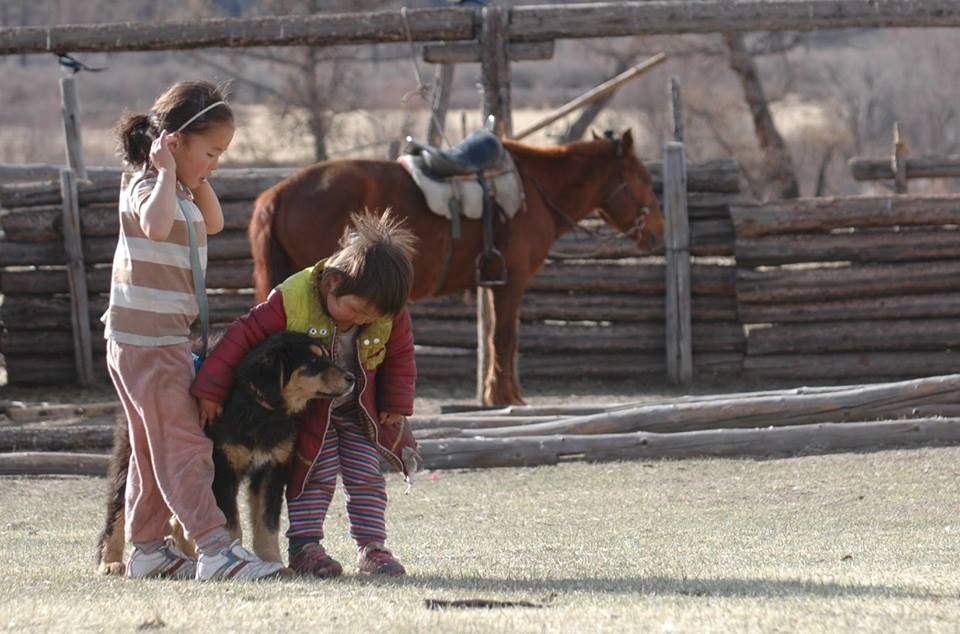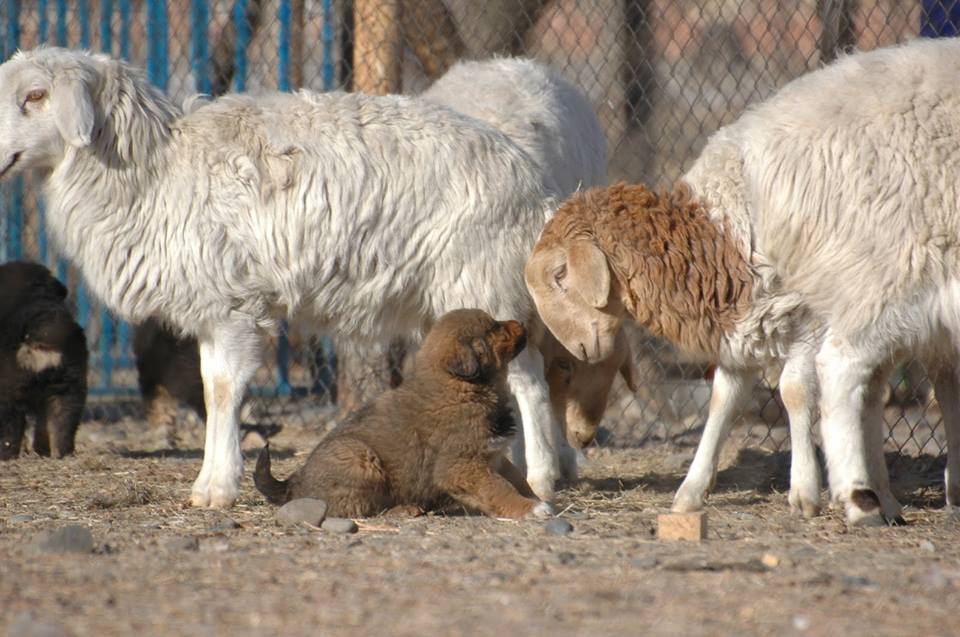HUSTAIN NURUU
Our last day in the field today, as we visit a few of the herding families living around the protected area of the park. On average these families lost between five and fifteen head of livestock a year to wolves before they were involved in the project. Those who have received dogs from MBDP reported no losses since receiving their Bankhars. The results we have been seeing are so promising and really foster a kind of “win-win” situation, the herding families are able to protect their animals and no wolves are being killed.
With time, the MBDP hopes that families will begin to keep less livestock knowing they will lose fewer to predators, thereby decreasing the overgrazing of grasslands. According to a report from UNEP, almost 90% of Mongolia’s pastureland is vulnerable to land degradation and desertification. A recent assessment of desertification in Mongolia shows that among the land assessed, 5% are very severely, 18% severely, 26% moderately and 23% slightly degraded. This means almost all grasslands are under threat of desertification and roughly 72% of the total territory is degraded to some extent. Changing the way the herders manage their livestock can help reduce impact on the ecosystem. Things like keeping less dense herds, moving more frequently to new pastures, increasing the variety of animals, and less reliance on just one livestock species for income, will benefit the herder and help mitigate ecological damage.
One of the biggest barriers to the MBDP’s growth at the moment, is the limitations of the breeding pool of Bankhars. The team is working to get the puppies trained and placed as quickly as possible to meet the demand for the dogs.
At the MBDP facility the Bankhar are housed in large enclosures that are 45m x 22.5m (150ft x 75ft) for a pair or a mother and pups, and there is a small herd of sheep (4-8) live with them at all times, so the dogs become accustomed to the sheep and bond with them over time. The bonding step is critical to the formation of a reliable working livestock guardian. The dogs learn to sleep among, eat next to and play around sheep. And while the team members interact with the dogs, they keep human interaction to a minimum, just enough to socialize the dogs to people, but not so much as to treat them as “pets.”
We can see how the bonding process between pups and sheep is going by observing the animals’ behavior. When the pups are playing near the sheep while they eat and the sheep are calm and tolerant of the pups’ presence, everything is working correctly. Eventually the dogs consider the sheep their “family” and will protect them with their lives.

[Photos courtesy Mongolian Bankhar Dog Project/OEX]


You must be logged in to post a comment.